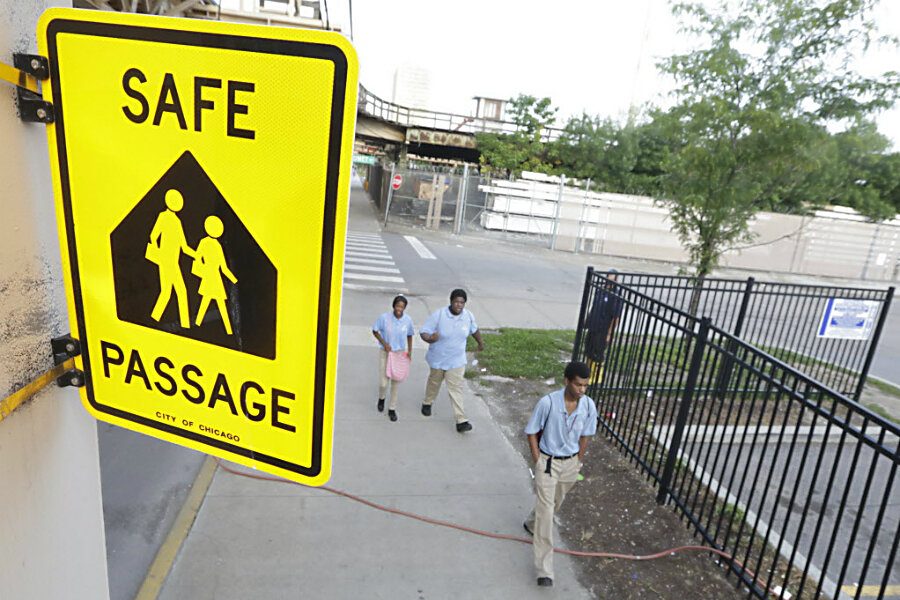How veterans are working to keep Chicago's children safe
Loading...
For school children, some Chicago streets can be a dangerous place.
While the city of Chicago has seen steadily declining murder rates since the peak in early-1990s, some neighborhoods remain comparatively violent. The "crime gap" in neighborhoods like Englewood and Austin is reflected in murder rates some 10 times higher than the rest of the city. For students who must navigate these neighborhoods on their way to school, every day can be a struggle. The city's 2013 closure of dozens of schools increased the commute times of many students, exacerbating the problem.
This is precisely why a group of veterans working for the group Leave No Veteran Behind, through Chicago's Safe Passage program work to protect children living in some of the city's roughest neighborhoods.
The non-profit program, started by Iraq and Afghanistan veterans Roy Sartin and Eli Williamson, "invests in heroes," helping to find employment and education opportunities for out-of-work military veterans.
"This isn't just volunteerism, but actual work," Eli Williamson, co-founder of Leave No Veteran Behind, told The Huffington Post. "It provides flexibility to go and look for alternate employment."
Increasing intimidation and violence, including a 2009 cell-phone video of a gruesome after-school fight in which honor student Darrion Albert was killed, prompted Chicago schools to start the Safe Passage program, with the aim of protecting students commuting to and from school.
Safe passage relies on community organizations like Leave No Veteran Behind to hire and manage workers to staff the program's routes. More than 400 veterans have participated in the Safe Passage program. On any given school day, roughly 130 veterans are out on the streets.
"This has visibly decreased youth violence in these areas," said Williamson.
Safe Passage may also be having a positive impact on the lives of students who previously attended the now shuttered schools. According to a report from the Chicago Public Schools:
"There have been no major incidents involving students on Safe Passage routes near Welcoming schools during the program’s operational hours. In the few instances where an issue arose, police say the response time by officers was immediate, often times leading to arrest, because they were staffing the route along with other city workers."
Violence on Safe Passage routes does still occur, however. Chicago's WBEZ reported that in 2013 shootings and assaults remained common near Safe Passage routes. The city doubled the number of Safe Passage workers in 2013.
"We're here faithfully; we've been here since day one," veteran Bernard Cooks told NPR in 2011. "Our intention is to be here until the last day so kids can figure out that, 'Hey, there's somebody that actually cares about our safety.'"








